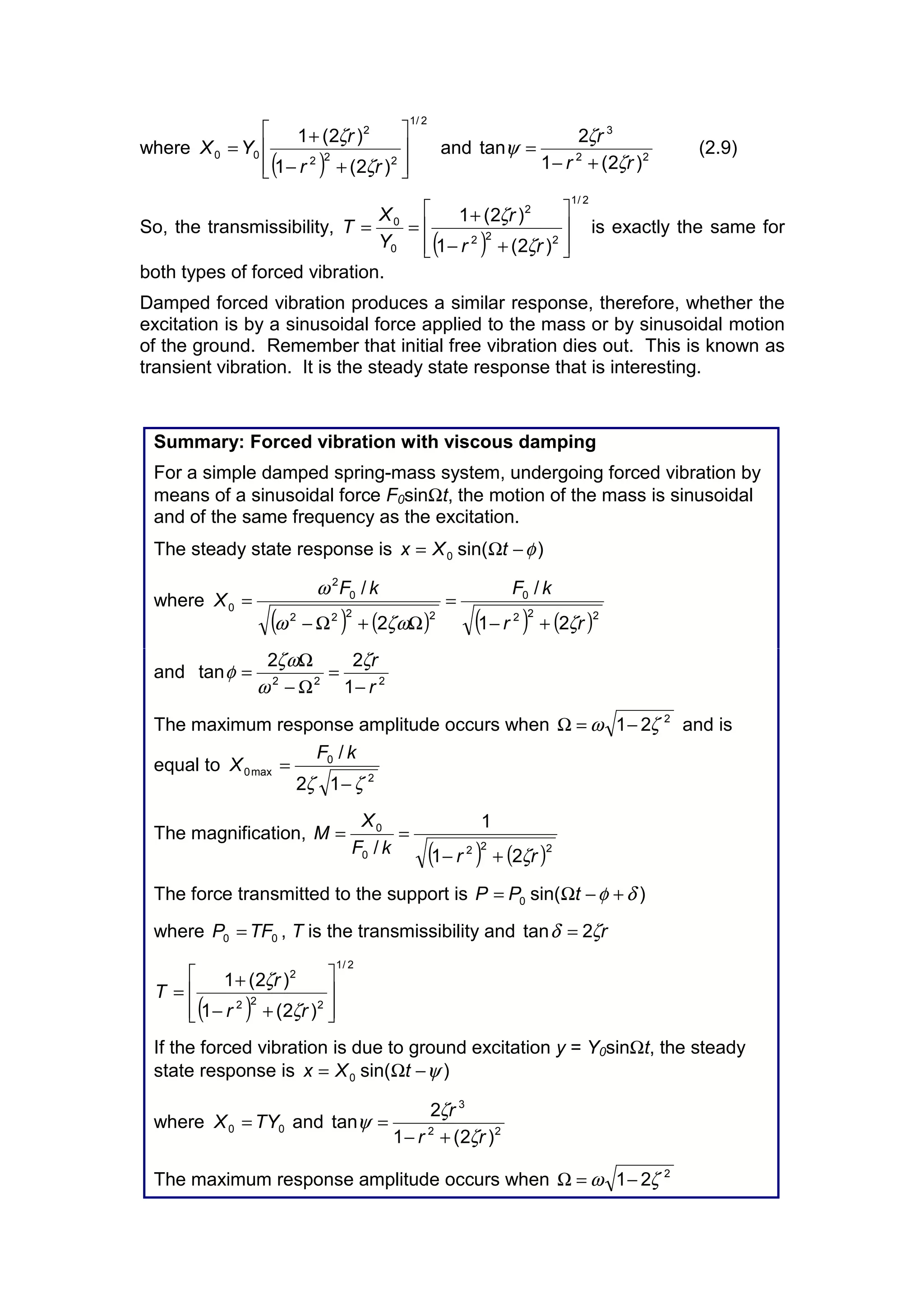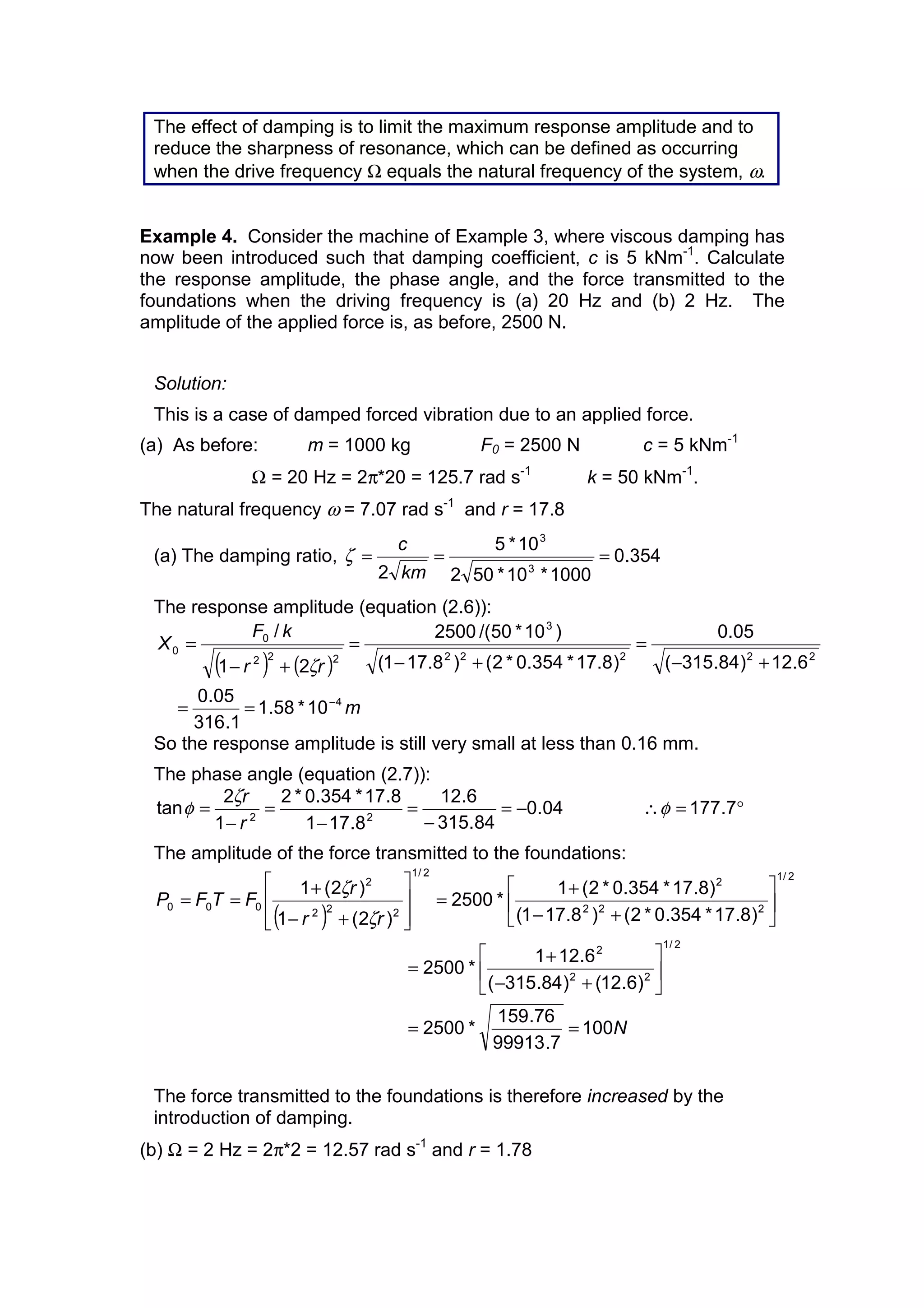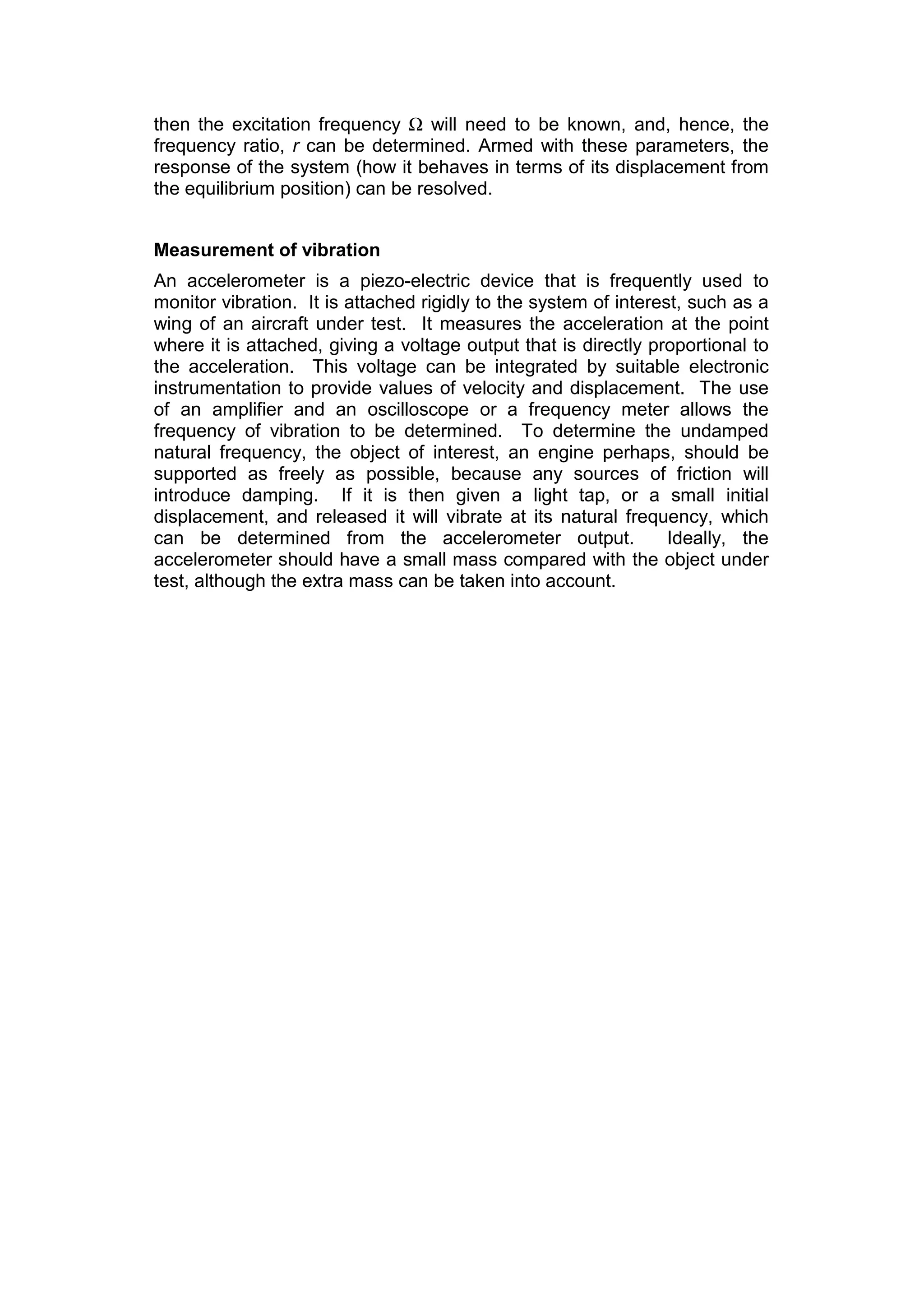For a damped spring-mass system undergoing forced vibration by a sinusoidal force or ground excitation, the steady state response is also sinusoidal at the excitation frequency. The maximum response amplitude occurs at a frequency slightly below the natural frequency and decreases with increased damping. Damping reduces the sharpness of resonance and limits the maximum response amplitude reached.
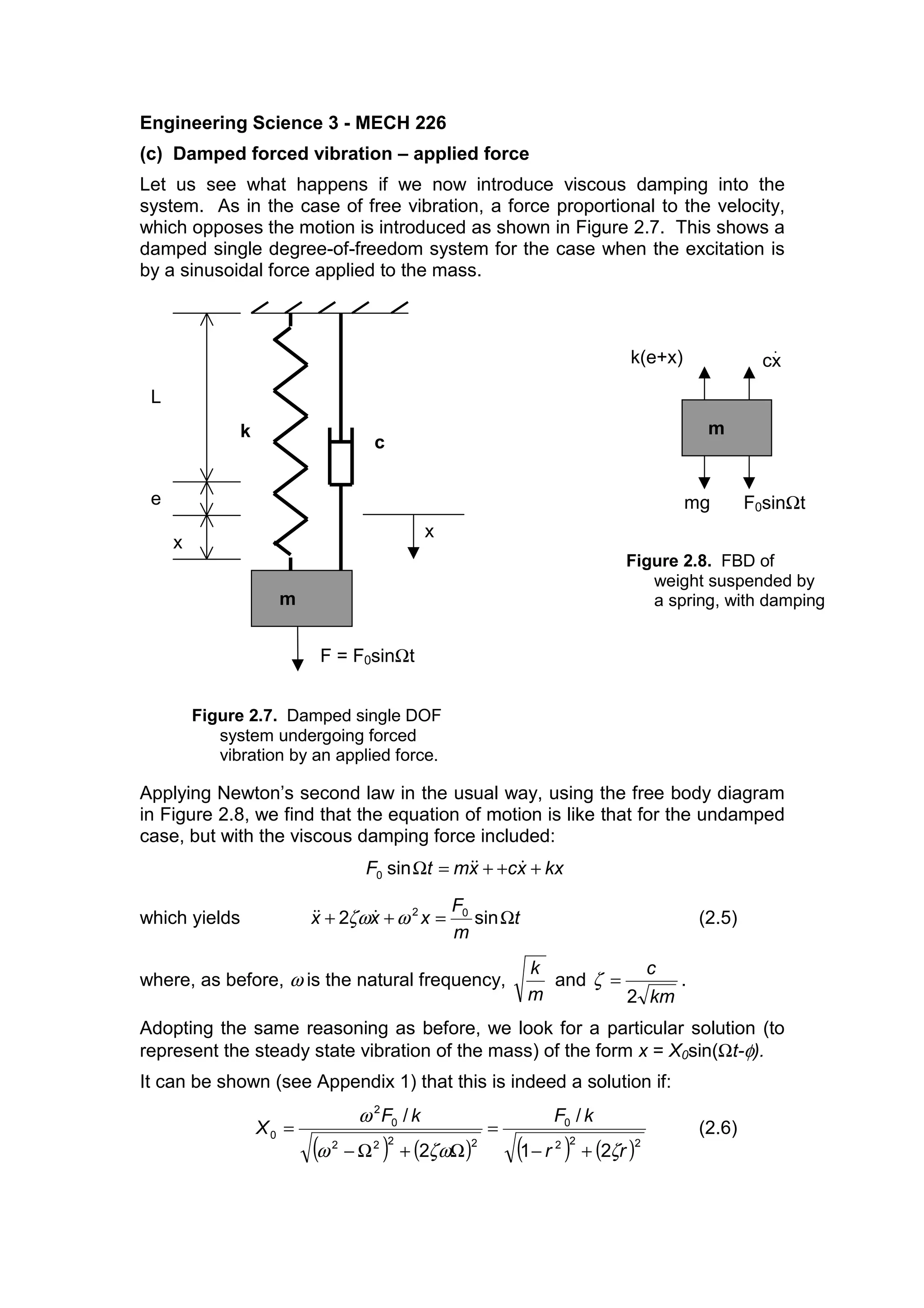
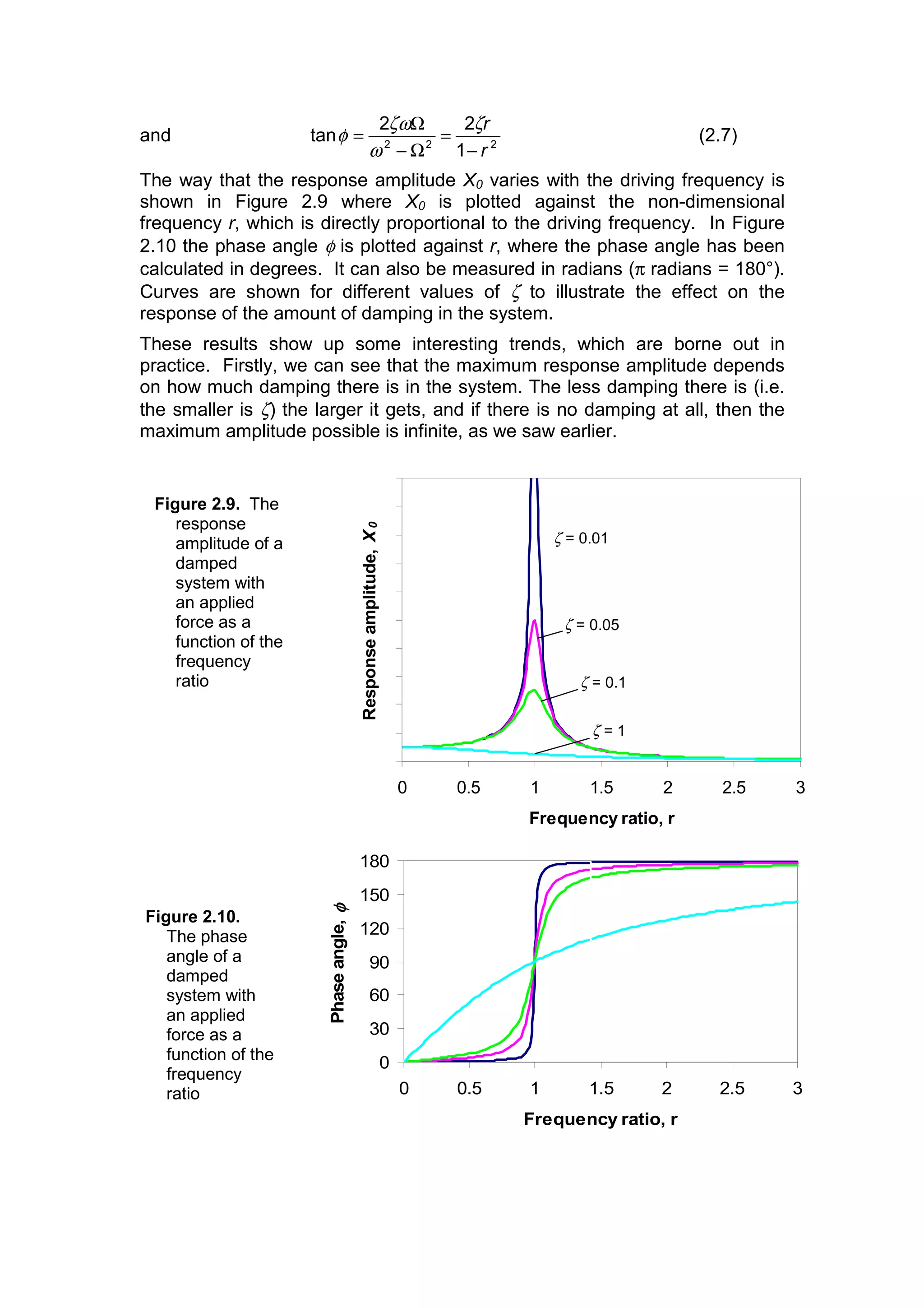
![It is clear, too, that the more damping there is, the more slowly does the
amplitude build up to its maximum as the driving frequency is increased. At
low damping, there is a sudden increase in amplitude as the driving frequency
approaches the natural frequency, and a sudden drop in amplitude as r
becomes bigger than 1. While, as the damping is increased, the build up to
the maximum amplitude is much more gradual, and “resonance” becomes
less sharp.
We can see that at very low driving frequencies (small r), the amplitude of the
response is almost the same as the static displacement, F0/k, but at very high
driving frequencies (large r), the amplitude tends to become zero, no matter
how little damping there is. The system simply doesn’t have time to respond.
You may not be able to see very clearly from Figure 2.9 that the maximum
amplitude of the response does not occur when r = 1, as it did for the
undamped system. From equation (2.6) it should be clear that X0 will be a
maximum when the denominator [(1-r2
)2
+ (2ζr)2
] is a minimum. To find the
value of r at which this occurs, we need to differentiate with respect to r (see
Appendix 1). We find that the amplitude becomes a maximum when
2
21 ζ−=r or 2
21 ζω −=Ω . For small ζ, the maximum occurs when r ≈ 1,
but if the system has high damping, then the frequency at which the response
becomes a maximum is lower than the natural frequency.
Once again, we see that a driving frequency near to the natural frequency
produces rather critical conditions, and if excessive amplitudes are to be
avoided, then driving the system close to its resonant frequency is to be
avoided. This means that either the system should be driven at a different
frequency or the stiffness, k, or mass, m, should be altered to change the
natural frequency, ω.
We can observe from Figure 2.10 that when the driving frequency is low, the
response is very nearly in phase with the excitation, shown by a small value of
φ, but when the frequency is high, the response is 180° out of phase (exactly
out of phase), while at r = 1, when the driving frequency is exactly the same
as the natural frequency, the response is 90° out of phase. So, as the
frequency is gradually increased, the response will change from being in
phase at frequencies below the resonant frequency to being out of phase at
frequencies above it. If the damping in the system is low, this change is very
sudden, and can readily be observed experimentally. As the damping is
increased, the change becomes more gradual. With critical damping (ζ = 1),
the change is very gradual, and the response becomes exactly out of phase
only at very high driving frequencies.
Note that the term “resonant frequency” is used sometimes to denote the
frequency at which the response amplitude becomes a maximum, and
sometimes the frequency at which r = 1. For low damping, the two are very
nearly the same, but for highly damped systems it should be made clear
which definition is used. In this course, I will stick to the definition of resonant
frequency as that for which r = 1, so that the resonant frequency and the
undamped natural frequency are the same, while the frequency at which the
amplitude becomes a maximum is 2
21 ζω − .](https://image.slidesharecdn.com/forcedamp2-170717094632/75/Forcedamp2-3-2048.jpg)
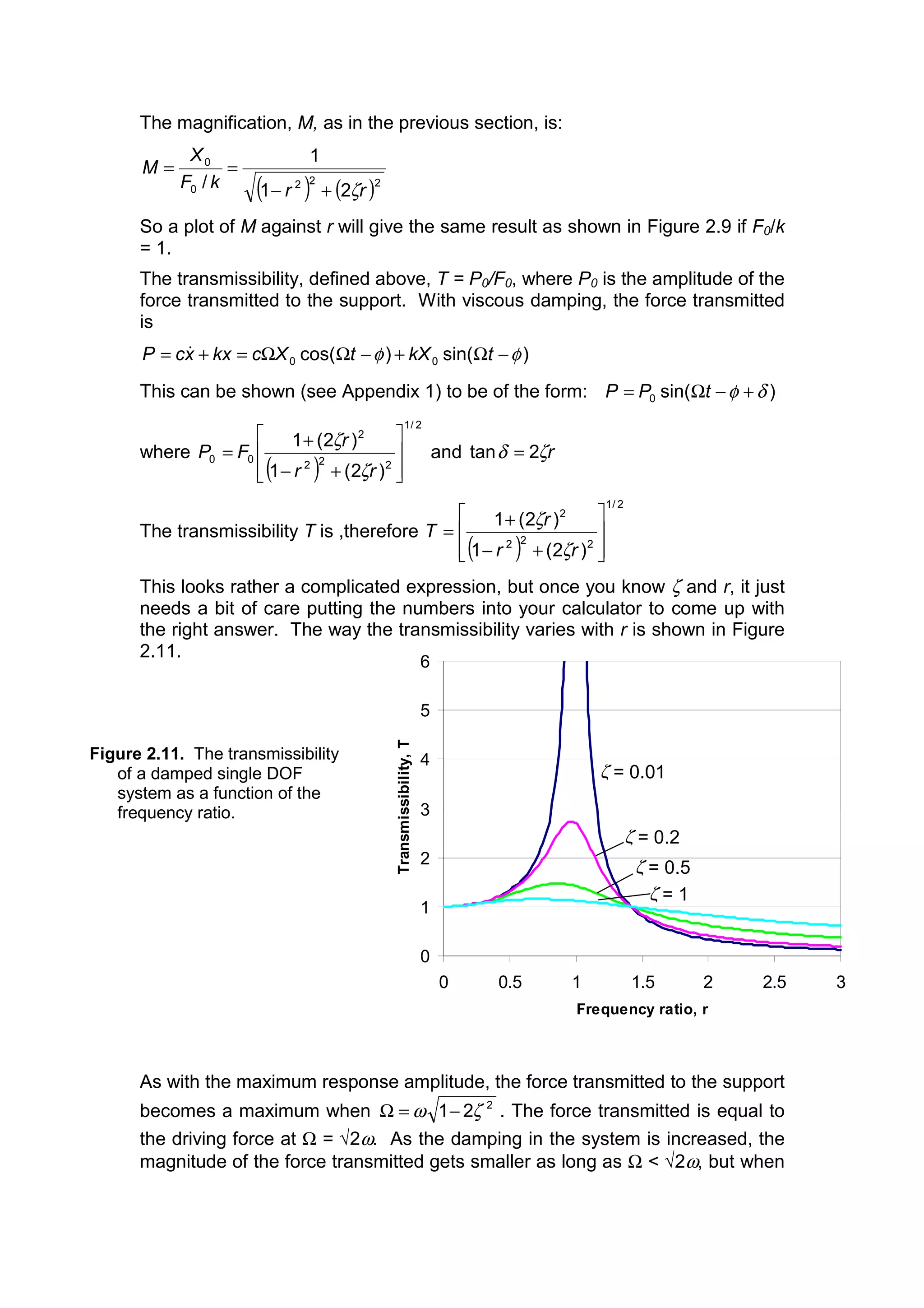
![the drive frequency is higher than this, the effect of increasing the damping is
reversed.
(d) Damped forced vibration – ground excitation
You should be familiar now with the way to set about looking at these
problems, so Figure 2.12 which shows a damped single degree-of-freedom
system undergoing forced vibration by means of ground excitation should
come as no surprise to you. Figure 2.13 shows the free body diagram of the
mass, and the equation of motion is derived exactly in the way we have used
before, by applying Newton’s second law. The results are given below.
The equation of motion: ( )[ ] xmyxcyxekmgFx
=−−−+−=å )(
kxxcxmycky ++=+∴
Dividing all through by m, and rewriting:
tY
m
c
tY
m
k
x
m
k
x
m
c
x Ω
Ω
+Ω=++ cossin 00
tYtYxxx ΩΩ+Ω=++∴ cos2sin2 00
22
ζωωωζω (2.8)
where, as before, ω is the natural frequency,
m
k
and
km
c
2
=ζ .
It can be shown (see Appendix 1) that this has the particular solution:
)sin(0 ψ−Ω= tXx
x
k
m
c
y = Y0sinΩt
L
e
x
m
k[e+(x-y)]
mg
)( yxc −
Figure 2.13. FBD of
weight suspended by
a spring, with damping
Figure 2.12. Forced vibration of a
damped single DOF system by ground
excitation](https://image.slidesharecdn.com/forcedamp2-170717094632/75/Forcedamp2-5-2048.jpg)
